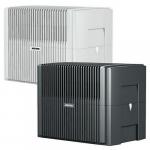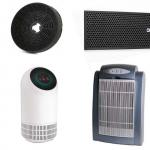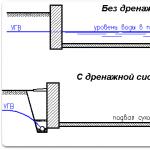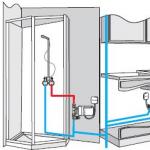Brief information: soft start of pumps. Motor soft starter
Who wants to strain, spend their money and time on the re-equipment of devices and mechanisms that already work perfectly? As practice shows - many. Although not everyone in life encounters industrial equipment equipped with powerful electric motors, they constantly meet, albeit not so voracious and powerful, electric motors in everyday life. Well, everyone used the elevator, for sure.
Are motors and loads a problem?
The fact is that virtually any electric motors, at the moment of starting or stopping the rotor, experience huge loads. The more powerful the engine and the equipment it drives, the greater the cost of running it.
Probably, the most significant load that falls on the engine at the time of start-up is a multiple, albeit short-term, excess of the rated operating current of the unit. After a few seconds of operation, when the electric motor reaches its nominal speed, the current consumed by it will also return to normal levels. To ensure the necessary power supply have to increase the capacity of electrical equipment and conductive lines which drives up their prices.
When a powerful electric motor is started, due to its high consumption, a “drawdown” of the supply voltage occurs, which can lead to malfunctions or failure of equipment powered with it from the same line. In addition, the service life of power supply equipment is reduced.
In the event of emergency situations that caused the engine to burn out or its severe overheating, properties of transformer steel may change so much so that after repair the engine will lose up to thirty percent of power. Under such circumstances, it is no longer suitable for further operation and requires replacement, which is also not cheap.
What is a soft start for?
It would seem that everything is correct, and the equipment is designed for this. But there is always a "but". In our case, there are several:
- at the moment of starting the electric motor, the supply current can exceed the rated one by four and a half to five times, which leads to significant heating of the windings, and this is not very good;
- starting the engine by direct connection leads to jerks, which primarily affect the density of the same windings, increasing the friction of the conductors during operation, accelerates the destruction of their insulation and, over time, can lead to an interturn short circuit;
- the aforementioned jerks and vibrations are transmitted to the entire driven unit. It's really unhealthy because may cause damage to its moving parts: gear systems, drive belts, conveyor belts, or just imagine yourself riding in a twitching elevator. In the case of pumps and fans, this is the risk of deformation and destruction of turbines and blades;
- do not forget about products that may be on the production line. They may fall, crumble or break due to such a jerk;
- Well, and probably the last of the points that deserve attention is the cost of operating such equipment. We are talking not only about expensive repairs associated with frequent critical loads, but also about a tangible amount of inefficiently spent electricity.
It would seem that all of the above operating difficulties are inherent only in powerful and bulky industrial equipment, however, this is not so. All this can become a headache for any average layman. First of all, this applies to power tools.
The specifics of the use of such units as electric jigsaws, drills, grinders and the like involve multiple start and stop cycles within a relatively short period of time. This mode of operation, to the same extent, affects their durability and energy consumption, as well as their industrial counterparts. With all this, one should not forget that soft start systems unable to control engine speed or reverse their direction. It is also impossible to increase the starting torque or reduce the current below what is required to start the rotation of the motor rotor.
Video: Soft start, adjustment and protection of the collector. engine
Options for soft start systems for electric motors
Star-delta system
 One of the most widely used starting systems for industrial asynchronous motors. Its main advantage is simplicity. The engine starts when the windings of the star system are switched, after which, when the nominal speed is set, it automatically switches to delta switching. This kind of start allows you to achieve a current almost a third lower than with direct start of the electric motor.
One of the most widely used starting systems for industrial asynchronous motors. Its main advantage is simplicity. The engine starts when the windings of the star system are switched, after which, when the nominal speed is set, it automatically switches to delta switching. This kind of start allows you to achieve a current almost a third lower than with direct start of the electric motor.
However, this method is not suitable for mechanisms with small rotational inertia. These include, for example, fans and small pumps due to the small size and weight of their turbines. At the time of the transition from the "star" to the "delta" configuration, they will sharply reduce speed or stop altogether. As a result, after switching, the electric motor essentially restarts. That is, in the end, you will not only achieve savings on the engine resource, but, most likely, you will get an overrun of electricity.
Video: Connecting a three-phase asynchronous motor with a star or delta
Electronic motor soft starter
 Soft start of the engine can be performed using triacs included in the control circuit. There are three schemes for such inclusion: single-phase, two-phase and three-phase. Each of them differs in its functionality and final cost, respectively.
Soft start of the engine can be performed using triacs included in the control circuit. There are three schemes for such inclusion: single-phase, two-phase and three-phase. Each of them differs in its functionality and final cost, respectively.
These schemes usually it is possible to reduce the starting current up to two or three nominal. In addition, it is possible to reduce the significant heating inherent in the aforementioned star-delta system, which contributes to an increase in the service life of electric motors. Due to the fact that the engine start is controlled by reducing the voltage, the acceleration of the rotor is carried out smoothly, and not abruptly, like in other schemes.
In general, several key tasks are assigned to engine soft start systems:
- the main one - lowering the starting current to three or four nominal;
- reduction of the motor supply voltage, in the presence of appropriate capacities and wiring;
- improvement of starting and braking parameters;
- emergency protection of the network against current overloads.
Single-phase starting circuit
This scheme is designed to start electric motors with a power of not more than eleven kilowatts. This option is used if it is necessary to soften the impact at start-up, and braking, soft start and lowering the starting current do not matter. First of all, because of the impossibility of organizing the latter in such a scheme. But due to the cheaper production of semiconductors, including triacs, they are discontinued and rarely found;
Two-phase starting circuit
Such a scheme is designed to regulate and start engines with a power of up to two hundred and fifty watts. Such soft start systems sometimes equipped with a bypass contactor to reduce the cost of the device, however, this does not solve the problem of asymmetric power supply of the phases, which can lead to overheating;
Three-phase starting circuit
This circuit is the most reliable and versatile soft start system for electric motors. The maximum power of the motors controlled by such a device is limited exclusively by the maximum thermal and electrical endurance of the triacs used. His versatility allows you to implement a lot of functions such as: dynamic brake, flyback or magnetic field and current limiting balancing.
 An important element of the last of the mentioned circuits is the bypass contactor, which was mentioned earlier. He allows to ensure the correct thermal regime of the soft start system of the electric motor, after the engine has reached its normal operating speed, preventing it from overheating.
An important element of the last of the mentioned circuits is the bypass contactor, which was mentioned earlier. He allows to ensure the correct thermal regime of the soft start system of the electric motor, after the engine has reached its normal operating speed, preventing it from overheating.
The soft starters of electric motors that exist today, in addition to the above properties, are designed for their joint operation with various controllers and automation systems. They have the ability to turn on at the command of the operator or the global control system. Under such circumstances, at the time of switching on the loads, interference may occur that can lead to malfunctions in the automation, and therefore, it is worth taking care of protection systems. The use of soft start circuits can significantly reduce their impact.
DIY soft start
Most of the systems listed above are actually inapplicable in domestic conditions. First of all, for the reason that at home we rarely use three-phase asynchronous motors. But collector single-phase motors - more than enough.
There are many schemes for the smooth start of engines. The choice of a specific one depends solely on you, but in principle, having certain knowledge of radio engineering, skillful hands and desire, it is quite you can assemble a decent homemade starter which will extend the life of your power tools and home appliances for years to come.

There are many reasons to turn on domestic pumps through a soft starter.
Usually, a submersible or surface pump is connected through an electromechanical or electronic relay, an automation unit or a magnetic starter. In all these cases, mains voltage is supplied to the pump by closing the contacts, that is, through a direct connection. This means that we apply full mains voltage to the stator windings of the electric motor, and the rotor does not yet rotate at this time. This leads to the appearance of an instant powerful torque on the rotor of the pump motor.
This connection scheme is characterized by the following phenomena when starting the pump:
Current surges through the stator (respectively, through the supply wires), since the rotor is short-circuited.
In a simplified sense, we have a short circuit on the secondary winding of the transformer. According to our experience, depending on the pump, the manufacturer and the load on the shaft, the pulsed starting current can exceed the operating current from 4 to 8, and in some instances up to 12 times.
The sudden appearance of torque on the shaft.
This has a negative effect on the starting and working stator windings, bearings, ceramic and rubber seals, significantly increasing their wear and reducing their service life.
The appearance of a sharp torque on the shaft leads to a sharp turn of the borehole pump housing relative to the pipeline system.
We have repeatedly witnessed how, because of this, the well pump was disconnected from the pipelines and fell into the well. In the case of a pumping station based on a surface pump installed on a hydraulic accumulator platform, this leads to loosening of the fixing nuts and destruction of the weld points and seams of the hydraulic accumulator. Also, when the pump is turned on directly, the service life of plumbing and shut-off valves is reduced, especially at their junctions.
It is generally accepted that the accumulator removes water hammer in the water supply system.
This is true, but water hammers disappear in pipelines only starting from the place where the accumulator is connected. In the gap between the pump and the accumulator, when the pump is connected directly, the water hammer remains. As a result, in the interval from the pump to the accumulator, we have all the consequences of a water hammer on all parts of the pump and on the pipeline system.
In water filtration systems, water hammer, which occurs when the pump is directly connected, significantly reduces the life of the filter elements.
If the local power grid weak, then your neighbors will also know about the start of a pump with a power of more than 1 kW with a direct connection by a sharp drop in the voltage in the network at the moment the pump is turned on.
If the local network EXTREMELY WEAK, and your neighbor also enjoys life by connecting all available electrical appliances to the network, then a well pump submerged to a great depth may not start. Such a power surge can damage electronic devices connected to the network. There are cases when, when starting the pump, an expensive refrigerator stuffed with electronics failed.
The more often the pump is turned on, the less its service life.
Frequent starts through a direct connection lead to failure of the plastic couplings of borehole pumps connecting the electric motor to the pump part.
You and I went through the problems that arise when starting the pump without soft starters (UPP) .
It should be noted that even when the pump is turned off without SCP with a direct connection scheme, there are negative points:
When the pump is turned off, a water hammer also occurs in the system, but now due to a sharp decrease in the torque on the pump shaft, which is equivalent to creating an instantaneous vacuum.
A sharp decrease in the torque on the pump shaft also leads to the rotation of the pump housing, but in the opposite direction.
Think about the pipelines and threaded connections of the pump.
In conventional household pumps, electric motors are asynchronous and have a pronounced inductive character.
If we abruptly interrupt the supply of current through an inductive load, then there is a sharp voltage jump on this load due to the continuity of the current. Yes, we open the contact, and all the high voltage should remain on the pump side. But with any mechanical opening of the contact, there is a so-called “contact bounce”, and high voltage pulses enter the network, which means they also enter the devices connected to the network at that time.
Thus, with a direct connection of the pump, there is increased wear on the mechanical and electrical parts of the pump (both during start-up and during shutdown). Devices connected to the same network also suffer, and the service life of filtration systems and plumbing fittings is reduced.
Usage soft starters ("Aquacontrol UPP-2.2S") allows you to smooth out most of the shortcomings described above. In device UPP-2,2S a specially calculated voltage rise curve on the pump is implemented, which allows, on the one hand, to start the pump in the most unfavorable operating conditions, and on the other hand, to smoothly increase the shaft speed. Also, protection against low and high voltage of the mains is built into this device to protect the pump from extreme operating modes and switching on.
IN UPP-2,2S phase triac control is used. At the moment of start-up, a part of the mains voltage is supplied to the pump, which creates a torque sufficient to guarantee the start of the pump. As the rotor spins up, the voltage on the pump gradually increases until the voltage is fully applied. After that, the relay turns on and the triac turns off. As a result, when using UPP-2,2S the pump is connected to the network through the relay contacts, that is, in the same way as with a direct connection. But for 3.2 seconds (this is the soft start time), the pump is energized through the triac, which provides a “soft start”, without sparks on the relay contacts.
With such a start, the maximum starting current exceeds the operating current by no more than 2.0-2.5 times instead of 5-8 times. Using UPP-2,2S, we reduce the starting loads on the pump by 2.5-3 times and prolong the life of the pump by the same amount, provide more comfortable operation of devices connected to the electrical network. UPP-2,2S can be called a device with resource-saving technology.
If you look at the submersible from a technical point of view, you have to agree that this is a very high-tech unit:
- with small overall dimensions provides high performance;
- able to work for a long time in relatively difficult conditions.
The cost of a downhole pump is relatively high, installation in the casing string is difficult. The conclusion follows from this: a borehole pump is equipment that you need to try to repair and change as little as possible. And for this it is necessary to create optimal operating conditions for it, then the equipment will last as long as possible without breakdowns and failures.
Factors affecting the life of a well pump
Any electric motor (and a pump is, in fact, an electric motor) experiences maximum loads at the time of starting. The less often the engine is turned on, the longer it will last. That is why a storage tank is provided in the water supply scheme of a country house - a simple or hydraulic accumulator - so that the pump has time to pump as much water as possible in one cycle of operation.
In this case, the borehole pump will be activated in the operation of the water supply system only when the water level in the storage tank drops. In the absence of a water storage tank, the pump motor will start every time at least one draw-off point is activated.
The second negative factor is starting currents that are several times higher than the nominal ones. This is due to the inertia of the mechanical part of the electric motor, when the rotation of the components begins a little later than the power supply. With frequent starts of pumping equipment and the constant occurrence of high starting currents, the protective function of the motor winding insulation gradually decreases due to high thermal loads. And this is already fraught with a short circuit and, as a result, a breakdown of the pump.
Ways to compensate for high inrush current
To reduce the starting current, it is necessary to provide for the installation of a soft start system. We bring to your attention two types of soft start systems for a borehole pump:
- Smooth SS-start using a special control panel for borehole pumps manufactured by domestic manufacturers (automatic control and protection stations for ACS "Kaskad" and "Vysota") and foreign (Pedrollo, Grundfos and some others).
- Starting the engine of a borehole pump using a frequency converter.
The principle of supplying power to the pump with the help of ACS electronic stations is an automatic gradual increase in voltage, regulated by phase control. By means of frequency conversion, the starting current is kept at the nominal level.
The main functions of the ACS:
- automatic (with the possibility of switching to manual mode) start and stop of the pump at the command of a relay that determines the water level in the storage tank;
- remote control of the pump;
- pump protection and power off in the event of a short circuit, phase imbalance and overloads;
- dry run protection.
The disadvantages of ACS include the high cost of equipment.
Do you know?
Some well pump manufacturers offer models with a built-in soft start system. For example, Grundfos SQ and SQE series.
"Why is it necessary to ensure a smooth start of a well pump", BC "POISK", tell friends: January 3rd, 2016
Posted by author - - November 8, 2013High inrush current is a problem for systems with limited maximum power. The machine can knock out, the uninterruptible power supply system goes into overload mode. How to be?
A good solution would be to use a soft starter (SCP). For example, we have a single-phase submersible pump with a power of 1 kW, located in a well at a depth of 50 meters. To start its engine, 4-6 times the starting current is required, i.e. the system must withstand a short-term power of about 5 kW. Let's say an inverter designed for 3kW simply will not be able to start. The moment of launch will also be accompanied by a sharp increase in pressure, which actually means a water hammer on the water supply system.
Insert the soft starter into the line feeding the pump. The device, within a specified time (usually up to 20 seconds), will smoothly raise the voltage, which will allow the pump to spin the impeller with acceleration, without jerking. As a result, we equated the starting current to the nominal value, i.e. it amounted to 1 kW and significantly extended the life of the submersible pump (the service life increases by about 2 times, given the cost of the pump, the decision to use soft starters, even in the absence of an energy backup system, becomes obvious):

Imagine a connection diagram that can be used with both single-phase and three-phase equipment:

Are there restrictions on the use of the soft starter? Yes, there are, and you should be aware of them:
1) Soft starters cannot be used with refrigerators. High starting current is needed to stall the compressor valves
2) Similarly for air conditioners and other equipment
If you have any questions, I'll be happy to answer in the comments!
Read also:
- Is it possible to save on electricity with...
- Generator with auto start (ATS) and UPS: remove ...





